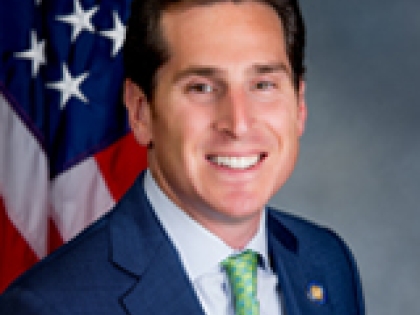
MTA to lawmakers: Making progress on LIRR improvements, repairs
MTA officials reassured state lawmakers Tuesday that the agency has made "tremendous progress" on streamlining Long Island Rail Road operations and getting projects on track, as they were questioned for more than three hours about taxpayer-funded projects in the works.
A reorganization of the MTA is expected to save hundreds of millions of dollars, and a recently approved capital program will invest $51.5 billion in modernizing infrastructure, the agency said.
“Whereas the MTA may have once been known for delayed projects that went over budget, we are now operating more creatively, efficiently and economically to deliver projects on time and at or under budget,” MTA chairman Patrick Foye said.
MTA officials appeared before the State Legislature at a joint hearing of the Senate and Assembly, as they consider funding for transit in the next state budget. The budget has to be approved by April 1.
Some lawmakers raised concerns about several projects involving the LIRR, including the yet-to-commence repairs of the East River Tunnels, which took on millions of gallons of corrosive saltwater during superstorm Sandy in 2012.
“Can we assure riders that they’re safe?” Sen. Todd Kaminsky (D-Long Beach) asked. “And how soon can we get them rehabbed so that … those tunnels that were inundated with Sandy flooding are going to be safe for travel and not create as many delays?”
MTA chief development officer Janno Lieber said the structures, which are owned by Amtrak but largely used by the LIRR, are in “not as bad shape” as other Sandy-damaged tunnels in the region, and “seem to be functioning.”
“There’s no immediate danger at all,” said Lieber, adding that the MTA is working with Amtrak to ensure that the eventual repair work, which could still be years away, would be largely carried out on nights and weekends. Amtrak previously said the two tunnels would have to be closed altogether for two years each.
On another matter, Sen. Kevin Thomas (D-Levittown) took issue with an incentive program built into the contract between the MTA and the builder of the LIRR’s proposed 10-mile-long Third Track between Floral Park and Hicksville. Under the program, the contractor, Third Track Constructors, can earn financial bonuses for keeping to a minimum the impact from construction on neighboring residents, including noise and traffic.
Thomas questioned why “taxpayer money is going toward incentives for something that they were supposed to do in the first place.”
“I don’t believe this is good policy,” Thomas added.
Lieber defended the incentive program, saying it is an innovative way of “holding the contractors’ feet to the fire.”
Lawmakers also pressed MTA officials about the long-delayed installation of “positive train control” safety technology, which can automatically slow down or stop a train to prevent an accident. Federal law requires the project be completed by the end of the year.
Foye assured them that the LIRR “will make the deadline,” and said the issues with the MTA’s positive train control technology suppliers that resulted in delays “are behind us.”
Kaminsky, a frequent LIRR critic, said “we’re in a very different place than we were just a few years ago in terms of railroad reliability” but hopes continued efforts can "make it even better."